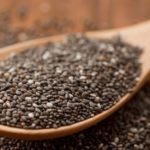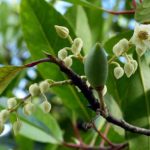Perhaps you’ve heard of xôi khúc and bánh khúc—traditional Vietnamese dishes. But do you know the key ingredient that makes these dishes so unique and delicious? It’s a vegetable called rau khúc (or ngách in some dialects). In this article, we’ll explore the origins of this vegetable, its nutritional benefits, and how it can be used in cooking to create some truly special dishes.
1 What is Rau Khúc?
Rau khúc, or ngách, is a leafy green vegetable that goes by many names, including khúc nếp, khúc tẻ, and rau khúc vàng. Its scientific name is Gnaphalium uliginosum, and it belongs to the Asteraceae family, also known as the Compositae family, which includes other well-known flowers such as marigolds and chrysanthemums.
Rau khúc thrives in temperate and subtropical climates and is commonly found growing wild in damp areas, such as along roadsides, lakes, ditches, and rice fields. It has a bushy appearance and can grow up to 50 cm in height.
 What is Rau Khúc?
What is Rau Khúc?
As a herbaceous plant, various parts of rau khúc are used medicinally, and its leaves are used in cooking to add a unique flavor to dishes like bánh and xôi. There are two main varieties of rau khúc: nếp and tẻ. The leaves of rau khúc nếp are larger and a darker shade of green, similar to Chinese mustard greens. Rau khúc tẻ, on the other hand, has smaller leaves with white spots and white flowers. When used in baking, rau khúc nếp tends to produce a crumbly and slightly bitter dough.
Due to its rarity, rau khúc can be quite expensive, with prices ranging from 45,000 to 50,000 VND per 100 grams on e-commerce platforms, equivalent to approximately 500,000 VND per kilogram.
 Rau Khúc Used in Cooking
Rau Khúc Used in Cooking
2 Health Benefits of Rau Khúc
Rau khúc is not just a delicious ingredient; it also offers a range of health benefits. Here are some of its most notable advantages:
- It helps treat inflammation of the throat, tonsils, and respiratory tract, and it may also aid in lowering high blood pressure.
- The roots and leaves have anti-inflammatory, diuretic, astringent, aphrodisiac, and antidepressant properties.
- Dried rau khúc flowers are used to make herbal pillows, which are believed to promote restful sleep. The leaves can also be used to make a poultice to treat mouth ulcers and inflammation.
- It is effective in treating constipation and hemorrhoids. The leaves and young branches can be applied topically to reduce swelling associated with gout.
 Health Benefits of Rau Khúc
Health Benefits of Rau Khúc
3 Precautions When Using Rau Khúc
While rau khúc is a natural plant, it is important to be aware of potential allergies associated with the Asteraceae family. Additionally, as with any natural remedy, it is crucial to use rau khúc in appropriate doses. The suitable dosage may vary depending on age, health status, and other factors. Therefore, it is always advisable to consult a healthcare professional before incorporating rau khúc into your diet or using it for medicinal purposes, especially if you:
- Are currently taking any medications or supplements
- Have any existing medical conditions or disorders
- Have allergies to any substances found in rau khúc or other plants and animals
- Are pregnant or breastfeeding
 Precautions When Using Rau Khúc
Precautions When Using Rau Khúc
While rau khúc offers a plethora of health benefits, it is always wise to consult a medical professional before incorporating it into your diet or using it for medicinal purposes.
We hope this article has shed some light on the wonders of rau khúc. With its unique flavor and abundant health benefits, it is certainly a vegetable worth seeking out and incorporating into your culinary creations and wellness routines.
Health: What You Need to Know’>Exploring the Benefits of Chia Seeds on Good Health: What You Need to Know
Understanding the Uses and Benefits of Essential Oils
 Benefits of Essential Oils’>
Benefits of Essential Oils’>What are the therapeutic properties of essential oils? How can they be used to improve your wellbeing? This article will explore the various types of essential oils, their benefits and uses. Uncover the power of these natural remedies and find out how they can help your own health and wellness!


































